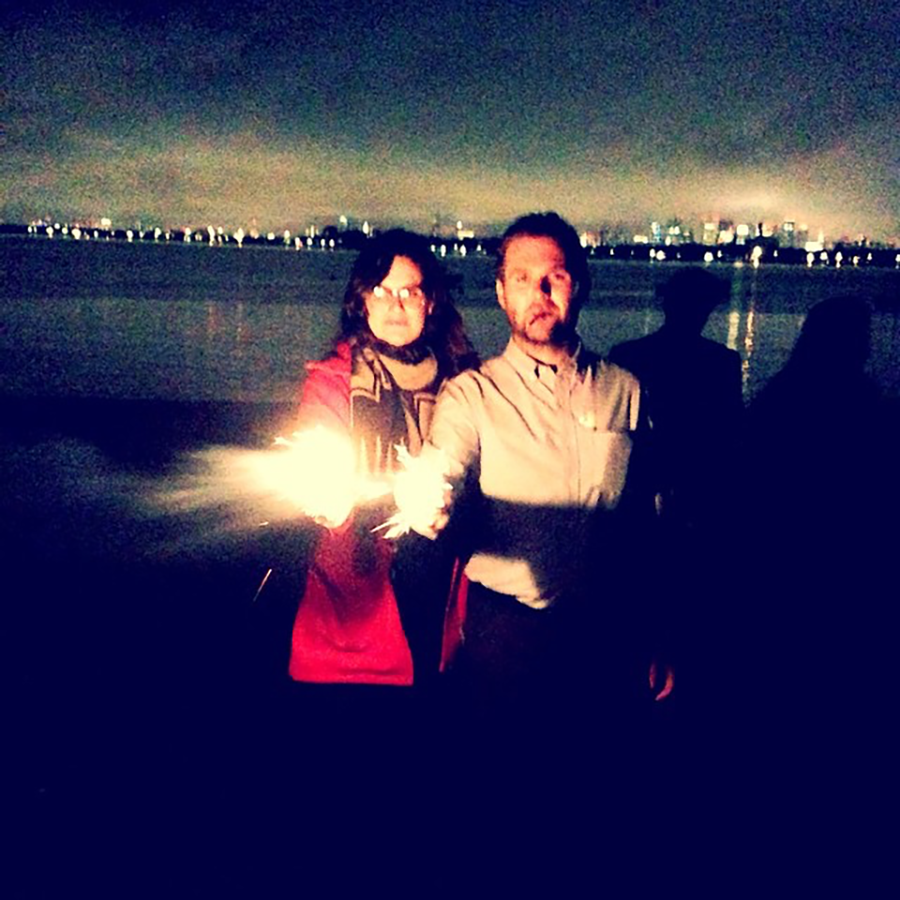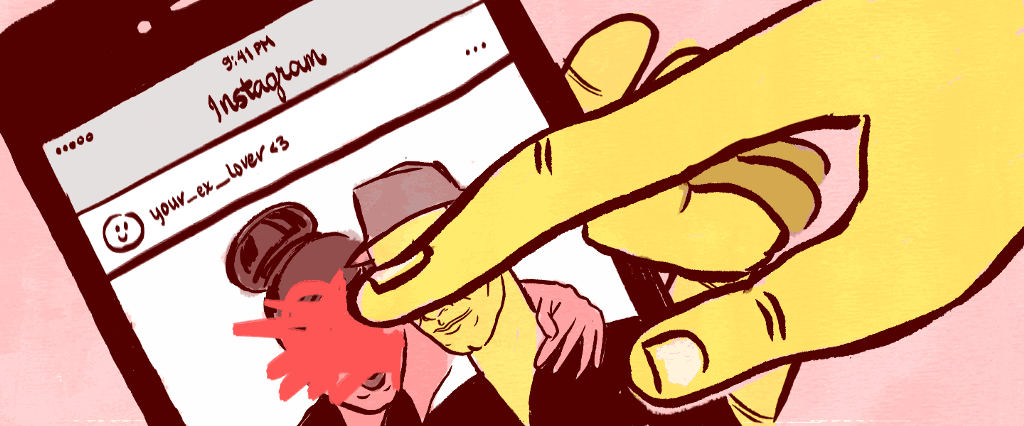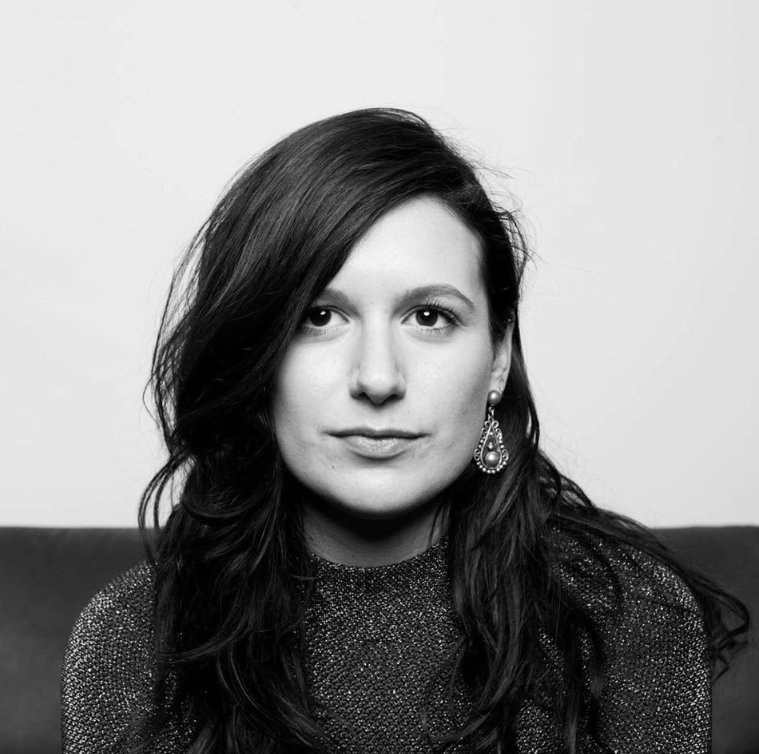The first night we met he took a picture of me. We stayed out until 2 a.m., our stomachs full of beer and cheap whiskey shots. It was summer 2012. The dance floor had a strobe above it that let off rainbow beams of light, which looked like tiny fireworks when captured by his iPhone. In the photo, my silhouette was dark, my face obscured, and the strobe’s yellow star bursts somehow contained within my body’s outline. In the bottom of the frame, two strangers are about to embark on a dance, their arms outstretched, fingertips almost touching. Before I left the bar, I asked him (Alex) to send me the picture as an excuse to get his number — intrigued by the way it perfectly captured the rush of a chance first meeting.

In the wee hours of that morning, he texted to ask me out the following week. He couched it with, “You can say no,” showing the bashfulness I’d later fall in love with. I took the entire day to respond, mulling over my loosening ties to the city he lived in, my fast-approaching move to California. I knew it was a bad idea, but the force of the night before propelled me to text: “Okay.”
When I got home, I posted the photo on Instagram. It would be the first of many.

Unlike most memes, no one has obsessively tracked (or taken credit for) the origin of “Relationship Goals,” which is odd, especially for something so prolific. You’ve seen it scattered across the web, as a hashtag on Twitter, a listicle on BuzzFeed, the caption on your annoying college roommate’s photo of his girlfriend on Instagram. Relationship Goals signifies a piece of content that is everything one aspires to be romantically; it’s like a culture-wide Pinterest board for romantic ideation. Scrolling through the hashtag reveals that we still value partnership, particularly the performance of it.
Everyone knows “that couple” on social media — the one who feels the need to constantly reinforce the strength of their bond publicly. They post pictures together, anniversary status updates and inside jokes about that one time they got food poisoning in Costa Rica. This couple loves “ussies,” and using the Man Crush Monday (#mcm) and Woman Crush Wednesday (#wcw) tags. They seem to live by the credo that if love isn’t broadcast on social media, it isn’t love at all. Very few people who exist in 2017 aren’t this couple to at least some degree, even if they actively don’t want to be. (I once spoke to a woman for a story on wedding hashtags who was vocal about not wanting one of her own; in the end, it wasn’t up to her — her guests made several.)
When it’s not you, it’s easy to surmise that a couple must be oversharing to overcompensate for something. Gwendolyn Seidman, a psychology professor at Albright College who researches couple’s social media habits, found that this behavior definitely makes a couple “less likable” to onlookers. But she also found no evidence that extreme oversharing is indicative of a weak or shallow relationship. “I think [skeptics would] be surprised to hear that it is associated with being genuinely happy in their relationships,” she told The Atlantic.
Seidman found that oversharing on Facebook wasn’t directly related to personality traits like narcissism. Instead, it’s evidence of Relationship-Contingent Self-Esteem, a type of self-worth that’s dependent on the strength of one’s relationship with others. “When your relationship is going well, you feel especially good about yourself,” she explains in an email. “But when it’s going poorly, you feel especially bad about yourself.” Her findings on RCSE, which is more common in introverts, reveal that a couple’s social media habits aren’t necessarily a cynical, insecure ploy for likes.
But this is the internet, a place where human beings go to extremes. There exists a man who once live-tweeted his 12-hour proposal (#MikeProposes), and another who chronicled his wife’s accidental home birth. I’m most fascinated, though, by the social media empires built around regular couples, popular accounts whose sole purpose is sharing their relationship with the world. For instance, Seok Li and Danbi Shin share a joint Instagram account with 130k followers (@shinliart), the avatar of which is half her face, half his. For their art project, entitled “Half&Half,” the long-distance duo posts photos of them each doing the same thing side-by-side — him in Seoul and her in New York.
Then there’s Vanessa Iris Roy and Melanie Roy, the married couple who first went viral in 2015, when Melanie shared two photos of her and her wife next to each other. In each photo, one is pregnant, and though it looks like a Photoshop job, the pics were actually taken a year apart. They posted it just for their small following of family and friends, but soon it went viral, drawing in 160k followers and inspiring them to continue sharing photos of their family once their kids were born.
“It’s your page, you can share whatever you want,” Vanessa tells me of those who might judge how she puts her personal life out there for everyone to see. “If someone doesn’t like it, screw them.”
This attitude is easier to maintain when you’re happily partnered. But what happens to these social media couples after a breakup? Jarlos420 was once the joint account of model duo John Tuite and Carlos Santolalla, who in 2015 became the first gay couple to be co-signed to a modeling agency. They were profiled by the Wall Street Journal, and subsequently credited with inspiring a trend of gay couples commodifying their relationships on Instagram. They hung out with the likes of Rihanna and enjoyed a dedicated audience of tens of thousands, who rabidly liked their posts of them cuddling and smoking weed.
But as things got rocky in their relationship, so did their content. “Sharing an Instagram with my boyfriend is usually really rewarding, but by using it to narrate our own love story we have inadvertently mythologised ourselves and omitted many of the challenging realities of being in a relationship,” Santolallo wrote of the couple’s film (titled #Goals) last year, which took on the issues of being a #RelationshipGoals couple.
It’s hard to parse exactly what happened next. The account nuked all its followers and deleted every post. The @Jarlos420 handle is now unlikely run by the former couple, as it’s home to random images/memes like so:
Santolallo then appeared in a documentary called Oversharing, which explores the anguish he went through post-Jarlos. “I wanna live in reality, but I’m on my phone, where I like pick it up and see photos of us every fucking moment, and people messaging me all the time asking what are we doing,” he mutters through sobs.
The fallout seems to have changed both men’s philosophy on (over?) sharing, as they declined to comment for this story. I imagine having a project like theirs isn’t only painful but embarrassing—a kind of monument to how naive you once were.

It was two years after our breakup that I learned Alex had a serious new girlfriend. On Thanksgiving morning I found myself perusing his Instagram for the first time in awhile. I was intrigued by a photo he posted geotagged to South Carolina, a place he has no family. That brought me to a photo of him with his arm lovingly around another woman. I knew immediately what that meant.
I kept thinking about him the following day on the beach in Point Reyes, my family’s version of a Black Friday tradition that once included Alex. As the men of the family shucked oysters, the rest of us huddled around leftover turkey, soggy stuffing and tiny plastic cups filled with warm chardonnay. I thought of the photo I posted on Instagram, Alex’s skinny frame crawling up a sequoia, and another of him with an open mollusk in his hand. He had moved to California for me, but he already looked miserable.
In retrospect, we were doomed.
We came to Point Reyes again and again after that first time with my family. It was an important place for us. It was where we indulged ourselves with salty brine, decadent cheese and whiskey straight from the flask. And where we hiked past elks, collected shells and illegally picked wildflowers. On our way home down a desolate forest road, I once unbuttoned his pants while he was driving so he could later fuck me in the back seat.
Intrinsic to my desire to create a time capsule of these moments, this love hard-won over thousands of miles, was another compulsion: to share it with the world. He had it, too. This impulse would prove strong enough to last up until our final days, when Alex would post a picture of me despite the end of our relationship being near. We’d moved back to New York City together, an attempt to make him happy again and to get back to that night we first met. His friends from college were getting married on an island off the coast of Boston, so out of obligation and hope, we headed up for the weekend.
When we got off the boat — already two drinks in — guests milled about the white folding chairs as they made glancing eyes toward the gloomy weather, saying they hoped the Guy Upstairs would hold it for just 15 more minutes. I was nervously holding onto my empty cup, picking at the brim with my chipped pink nails. I restlessly thumbed through the thick, eggshell-colored program before grabbing for Alex’s hand. It was the last time I’d reach for him; the moment I decided I needed to quit trying to “make it work.”
After the wedding, we hauled the leftover booze onto the beach and huddled around a bonfire. As they had been throughout the night, our smartphones were out, snapping pictures of the happy couple by the fire and uploading them with the wedding hashtag for hung-over review the next morning.
Alex brought the couple fireworks as a present. I was cold and wanted to go to bed, but he begged me to keep drinking with his friends, to pretend everything was all right. Before I went back to the room alone, he asked me to pose for a photo with a sparkler. I agreed, but only if our friend joined. I forced a smile, and Alex uploaded it later that night, sans caption.

I scroll all the way back through my Instagram now, and re-experience these forgotten moments I once cherished — ones I’ve tried hard to forget but now feel strong enough to remember. My gut is reminded of that familiar motivation, the one that first led me to try to capture the beauty of his glorious face years ago, the one that desperately wanted others to know about the sequoia, the oysters, the wine that made me sick with desire.
Strangely, taking this walk down digital memory lane doesn’t make me feel sad or regretful or humiliated. Quite the opposite: I’m grateful I never deleted any of these photos. Pressing “post” was simply my way of trying to hold on.
Maybe the #goal can outlive the #relationship after all.

